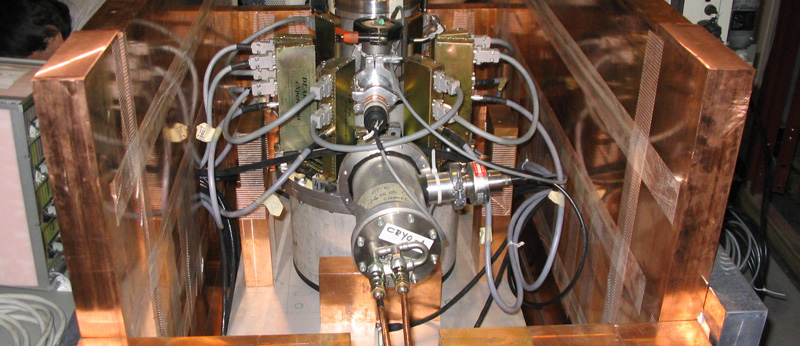Abstract
The VIP (VIolation of the Pauli exclusion principle) experiment put at test the Pauli Exclusion Principle (PEP) and investigate the implications of a tiny violation in physics. The PEP represents one of the main pillars of modern physics and of our understanding of matter, life and the Universe. In spite of its enormous success, PEP still generates many debates, deeply rooted in the foundations of Quantum Mechanics, on possible limits of its validity. Feynman wrote 50 years ago that not having found a simple and easy explanation for PEP “probably means that we do not have a complete understanding of the fundamental principle involved”.
In the framework of VIP we perform an experimental search for “impossible atoms”, i.e. atoms forbidden by PEP, by using an apparatus installed and taking data in the underground laboratory of Gran Sasso (Italy). We will either set very strong limits on the PEP violation probability for electrons, or we will find a violation.
On the theoretical side we will explore theories which could allow the PEP violation, starting from the quon-theory, developed by O. W. Greenberg. The PEP violation could be related to: violation of CPT, locality, or Lorentz symmetry; existence of extra-dimensions, or the non-commutative spacetime.
Description of the detectior and related techniques
VIP is searching for Pauli Exclusion Principle (PEP) prohibited transitions in copper atoms of electrons going from the 2p to the 1s level already occupied by two electrons. “Fresh” electrons are introduced in a copper target by circulating a 100 A current; the emitted X rays are measured with solid state detectors (Charge Coupled Devices in a first phase of the experiment and Silicon Drift Detectors in the upgraded version, VIP2). The energy of the PEP-prohibited X-ray transitions is shifted towards lower values with respect to the allowed transitions: 7.7 keV instead of 8.04 keV. The achievable bound on the PEP violation probability will be 10-31, improving the present limit by two orders of magnitude. VIP2 will either set the strongest limit on PEP violation by electrons, or will find a violation.
Spokesperson
This email address is being protected from spambots. You need JavaScript enabled to view it. (INFN Laboratori Nazionali di Frascati)
Collaboration
ITALY
INFN laboratori Nazionali di Frascati: C. Curceanu, S. Bartalucci, A. Clozza, L. de Paolis, A. d’Uffizi, C. Guaraldo, M. Iliescu, K. Piscicchia(*), E. Sbardella, A. Scordo, H. Shi, D. Sirghi, F. Sirghi, L.Sperandio (*) and Museo torico della Fisica e Centro Studi e Ricerche “Enrico Fermi”, Roma
INFN Laboratori Nazionali del Gran Sasso: M. Laubenstein
Università and INFN Trieste: E. Milotti
AUSTRIA
SMI-Vienna: C. Berucci, M. Cargnelli, J. Marton, A. Pichler, J. Zmeskal
France
Univ. Rennes: S. di Matteo
Germany
TUM-Muenchen: O. Vazquez Doce
Romania
IFIN-HH, Bucharest: M. Bragadireanu, D. Pietreanu, T. Ponta
SWITZERLAND
CERN: S. Bertolucci
Univ. Neuchatel: J.-P. Egger
Recent publications
Quantum explorations: from the waltz of the Pauli exclusion principle to the rock of the spontaneous collapse, C Curceanu et al (2015) Phys. Scr. 90, 028003
Beyond Quantum Mechanics? Hunting the “Impossible” Atoms – Pauli Exclusion Principle Violation and Spontaneous collapse of the Wave Function at Test K. Piscicchia et al., Acta Physica Polonica B46 (2015) 147
Experimental Tests of Quantum Mechanics: Pauli Exclusion Principle and Spontaneous Collapse Models, Springer Proc.Phys. 145 (2014) 181
A glimpse into the Pandora box of the quantum mechanics: The Pauli exclusion principle violation and spontaneous collapse models put at test, C. Curceanu et al., AIP Conf. Proc. 1508, (2012) 136
The VIP Experimental Limit on the Pauli Exclusion Principle Violation by Electrons, S. Bartolucci et al., Found.Phys. 40 (2010) 765
Official website



